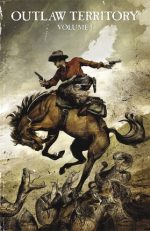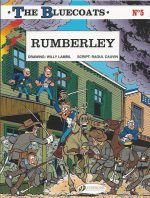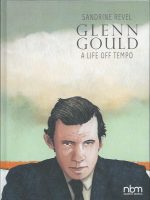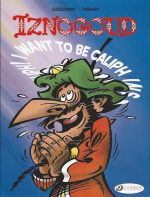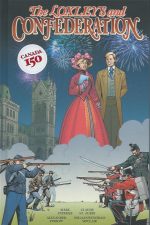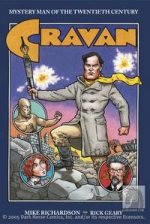
By Mike Richardson & Rick Geary (Dark Horse Books)
ISBN: 978-1-59307-291-9Â Â Â Â Â Â Â Â Â Â Â Â Â Â Â Â Â eISBN: 978-1-62115-198-2
The old cliché about truth being stranger than fiction seemingly has a lot more force these days than it used to have. Moreover, everybody is captivated by an unsolved mystery, aren’t they?
That was clearly the case when occasional writer and full-time publisher (of Dark Horse Comics) Mike Richardson discovered he shared a small obsession with cartoonist and true crime raconteur Rick Geary…
That story is intriguing enough in itself but only constitutes a minor footnote at the back of this fascinating appraisal of one of the most infamous self-aggrandizers of the early 20th century and a man all but forgotten today.
Rick Geary is a unique talent in the comic industry, not simply because of his style of drawing but especially because of his method of telling tales.
For decades he toiled as an Underground cartoonist and freelance illustrator of strange stories, published in locales as varied as Heavy Metal, Epic Illustrated, National Lampoon, RAW and High Times, honing a unique ability to create sublimely understated stories by stringing together seemingly unconnected streams of narrative to compose tales moving, often melancholy and always beguiling.
Discovering his natural oeuvre with works including biographies of J. Edgar Hoover and Trotsky plus the multi-volumed Treasury of Victorian Murder/Treasury of XXth Century Murder series, Geary has grown into a grand master and unique presence in both comics and True Crime literature.
Here, in this captivating monochrome tome, he and Richardson weave the scanty facts, some solid supposition and a bit of bold extrapolation into a mesmerising treatise about a precursor to Jimmy Hoffa and Lord Lucan – with a hefty dose of Shergar, D.B. Cooper, Ronnie Biggs and Forrest Gump thrown in for good measure…
Arthur Cravan was but one of the names used by serial fraudster and inveterate troublemaker Fabian Lloyd, a nephew of Oscar Wilde who, after being expelled from the last of many good schools in 1903, began – at the tender age of 16 – a short and sparkling career seeking the limelight.
In a scant few years he became a star of the art world: a noted poet, Bohemian, journalist, art critic, painter, publisher, author, performer and pugilist (through a string of uncanny flukes he became Lightweight Champion of France without throwing a punch…) whilst simultaneously admitting to being a thief, forger, deserter, confidence-trickster, political subversive and agitator…
A man of many identities – for most of whom he created impeccably-crafted forged papers – Cravan numbered Jack Johnson, Leon Trotsky, Marcel Duchamp and other stellar luminaries of the Edwardian and pre-Great War era as friends. Even after admitting to manufacturing undiscovered works by Manet, Dante and his uncle Oscar whilst assiduously avoiding any involvement in the global conflagration, he was feted by America’s intellectual elite whilst being hounded by the US Secret Service…
In 1918, with the American authorities making his life miserable, he set sail from Mexico to join poet Mina Loy – wife and mother of his unborn daughter – in Buenos Aires, but was lost at sea and never seen again.
At least that’s the official version. Searches found nothing and eventually he was declared dead and mostly forgotten, but stories and sightings persisted, as they always do…
And here’s where Richardson and Geary boldly imagine and draw some admittedly convincing conclusions about Cravan’s possible fate, linking it to the short but fabled career of reclusive author B. Traven: most well known today as the enigma who penned Death Ship and The Treasure of the Sierra Madre…
Beguilingly speculative and ringing with authenticity if not indisputable veracity, this fictive biography is a superb exercise in historical exploration and one packed with wholehearted fun and mercurial love of life.
©2005 Dark Horse Comics, Inc. All rights reserved.

